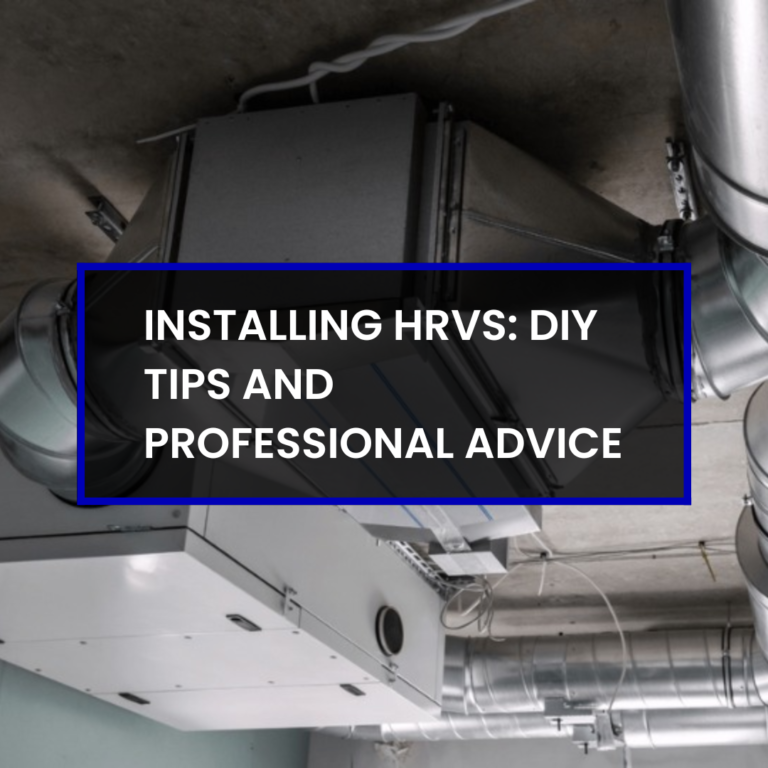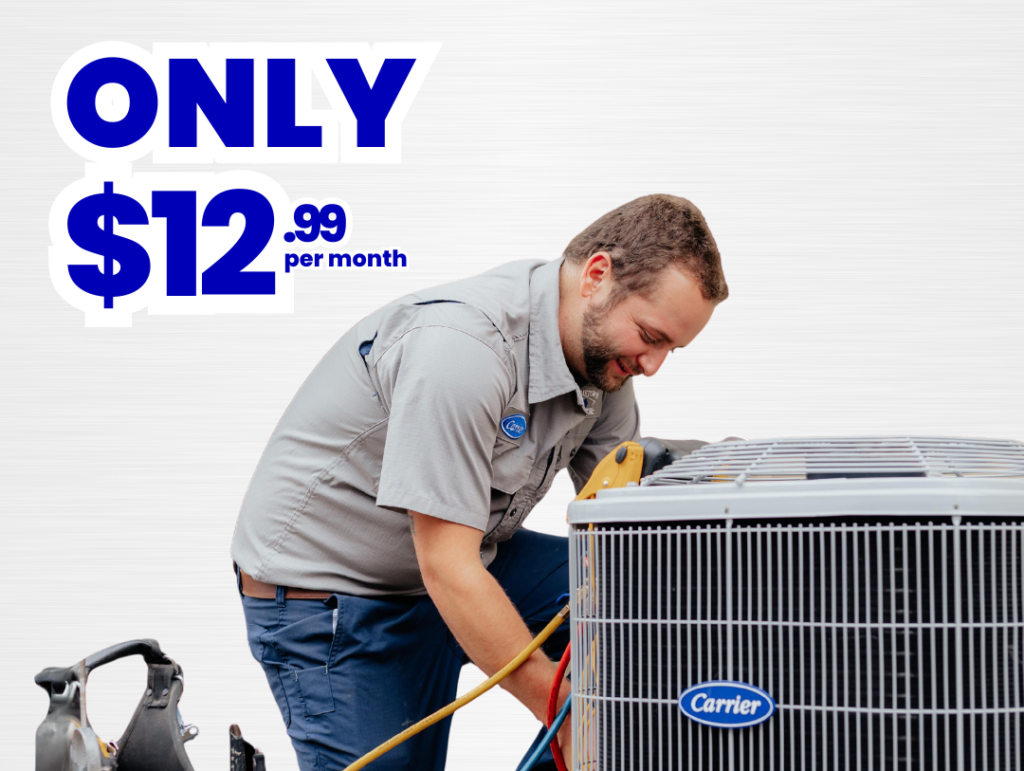Heat Recovery Ventilators (HRVs) stand at the forefront of energy-efficient home ventilation solutions, revolutionizing the way we think about indoor air quality and comfort. By balancing the need for fresh air in tightly sealed homes with energy savings, HRVs embody the principles of modern, sustainable living. Their role in creating healthier living environments, while also conserving energy, underscores their importance in today’s eco-conscious world.
What Are HRVs?
Heat Recovery Ventilators (HRVs) are crucial for maintaining indoor air quality by providing a constant supply of fresh air and improving energy efficiency in your home. HRVs work by extracting stale air from inside the house and simultaneously bringing in fresh air from outside, transferring heat energy between the two air streams without mixing them. This process ensures that your home is ventilated without significant heat loss, making HRVs an essential component of modern, energy-efficient homes.
Benefits of Installing HRVs
Installing HRVs in your home offers numerous benefits, including improved air quality, reduced energy costs, and enhanced comfort. HRVs effectively remove contaminants and moisture from indoor air, reducing the risk of mold growth and allergic reactions. By recovering heat from the exhausted air, HRVs reduce the need for additional heating, saving you money on energy bills. Additionally, the constant supply of fresh air helps to eliminate odors and maintain a comfortable living environment.
Preparing for HRV Installation
Embarking on the installation of an HRV system marks a pivotal step towards enhancing the air quality and energy efficiency of your home. This preparatory phase is critical, laying the groundwork for a successful installation.
Assessing Your Home’s Ventilation Needs
Before installing an HRV, it’s important to assess your home’s specific ventilation needs. Consider the size of your home, the number of occupants, and any existing ventilation systems. An HRV should be sized correctly to handle the air volume required for your space, ensuring efficient operation. Consulting with a professional can help you determine the right HRV model and configuration for your home.
Tools and Materials Required
Installing an HRV requires various tools and materials, including ductwork, vents, a drill, screws, and insulation. You’ll also need the HRV unit itself, along with any manufacturer-specific installation components. Preparing these items in advance can streamline the installation process. Ensure you have a detailed plan and instructions for your specific HRV model before beginning the installation.
DIY Installation Tips for HRVs
The DIY installation of an HRV system embodies the spirit of hands-on homeowners who are eager to take on new challenges and enhance their living spaces.
Step-by-Step Guide to Installing HRVs
A successful DIY installation of an HRV involves several key steps. Start by determining the best location for the HRV unit and ductwork, considering both indoor and outdoor access points. Install the HRV unit, ensuring it’s securely fastened and level. Run ductwork from the unit to the designated indoor and outdoor vents, taking care to minimize bends in the ducts for efficient airflow. Finally, connect the HRV to your home’s electrical system, following all safety protocols.
Common Pitfalls to Avoid in DIY Installation
One of the most common pitfalls in DIY HRV installation is improper ductwork installation, which can significantly reduce system efficiency. Avoid using ducts that are too long or have too many bends, as this can restrict airflow. Ensure all connections are sealed properly to prevent air leaks. Additionally, failing to calibrate the HRV correctly can lead to imbalanced air pressure, causing drafts or insufficient ventilation.
Professional Installation of HRVs
Opting for professional installation of an HRV brings a level of expertise and precision to the project that ensures optimal performance and longevity of the system.
When to Consider a Professional for HRV Installation
While many homeowners may feel comfortable attempting a DIY HRV installation, there are situations where hiring a professional is advisable. Complex installations, homes with unique architectural features, or lack of confidence in electrical work are all valid reasons to seek professional assistance. A professional HVAC contractor can ensure your HRV is installed correctly and efficiently, providing peace of mind and optimal system performance.
What to Look for in a Professional HVAC Contractor
When choosing a professional for HRV installation, look for a contractor with specific experience in HRVs and a strong track record of satisfied customers. Check for relevant certifications and licenses, and ask for references or case studies of previous installations. A reputable contractor should offer a detailed quote and a clear explanation of the installation process, ensuring you understand what to expect.
Maintaining Your HRV System
Maintaining an HRV system is an ongoing commitment to preserving indoor air quality and ensuring the system’s efficiency.
Routine Maintenance Tips
To keep your HRV operating efficiently, regular maintenance is essential. This includes cleaning or replacing filters every three to six months, inspecting ducts and vents for blockages, and checking the core and fans for dust or debris. Additionally, ensure the exterior vents are clear of obstructions to maintain proper airflow. Following these maintenance tips can extend the life of your HRV and ensure it operates at peak efficiency.
Troubleshooting Common Issues
If you encounter issues with your HRV, such as unusual noises, reduced airflow, or inefficiency, several common troubleshooting steps can help. First, check and clean the filters, as clogged filters can significantly impact performance. Inspect the ductwork for leaks or blockages and ensure the exterior vents are not obstructed. If problems persist, consulting the user manual or contacting a professional can help identify and resolve more complex issues.
Why Choose Us for Your HRV Installation
Choosing Hometown Heating for your HRV installation means entrusting your home’s ventilation to a team that values excellence and customer satisfaction above all.
Our Expertise and Services
We are your trusted partner for professional HRV installation. With years of experience in HVAC services, we specialize in HRVs, ensuring your installation is handled efficiently and effectively. Our team of certified professionals is equipped with the knowledge and tools to install a wide range of HRV models, tailored to meet the specific needs of your home. We prioritize quality, safety, and customer satisfaction, making us the ideal choice for your HRV installation.
Customer Satisfaction and Support
We understand the importance of reliable customer support before, during, and after the installation of HRVs. We offer comprehensive consultations to assess your home’s ventilation needs, providing personalized advice and solutions. Our commitment to customer satisfaction extends to our after-installation support, including maintenance tips and troubleshooting assistance. Choosing us ensures a hassle-free installation experience and the peace of mind that comes with expert support.
Frequently Asked Questions
Can HRVs help reduce heating costs in winter?
Yes, by recovering heat from the exhausted air, HRVs reduce the need for additional heating, which can lead to significant savings on energy bills during colder months.
Can installing an HRV system improve health conditions?
Yes, by removing contaminants and moisture from indoor air, HRVs can reduce the risk of mold growth and allergic reactions, contributing to a healthier living environment.
Are HRVs suitable for homes in hot climates?
While HRVs are primarily designed for energy recovery in cooler climates, they can still improve indoor air quality in hot climates by ensuring a constant supply of fresh air. However, in very hot climates, an Energy Recovery Ventilator (ERV) might be more appropriate as it also transfers moisture.
What is the lifespan of an HRV system?
With proper maintenance, an HRV system can last 15 to 20 years. Regular cleaning and servicing are crucial to maximize its lifespan.
How does the presence of an HRV impact home energy ratings?
The installation of an HRV can positively impact home energy ratings by improving energy efficiency and indoor air quality, which are key factors in such assessments.
What are the benefits of choosing a company like Hometown Heating for HRV installation?
We have specific expertise in HRVs and ensure efficient and effective installation, quality service, and reliable customer support.





